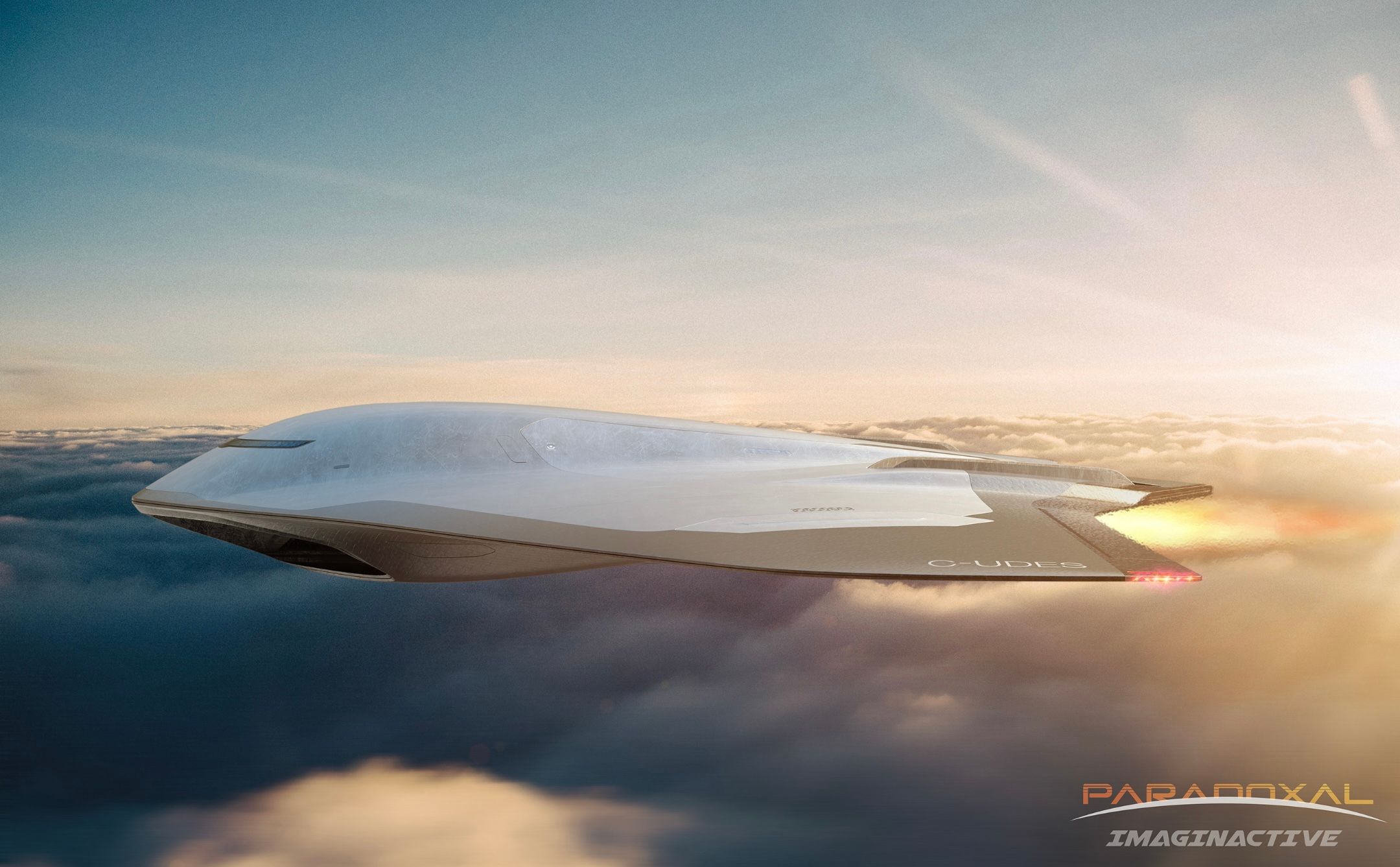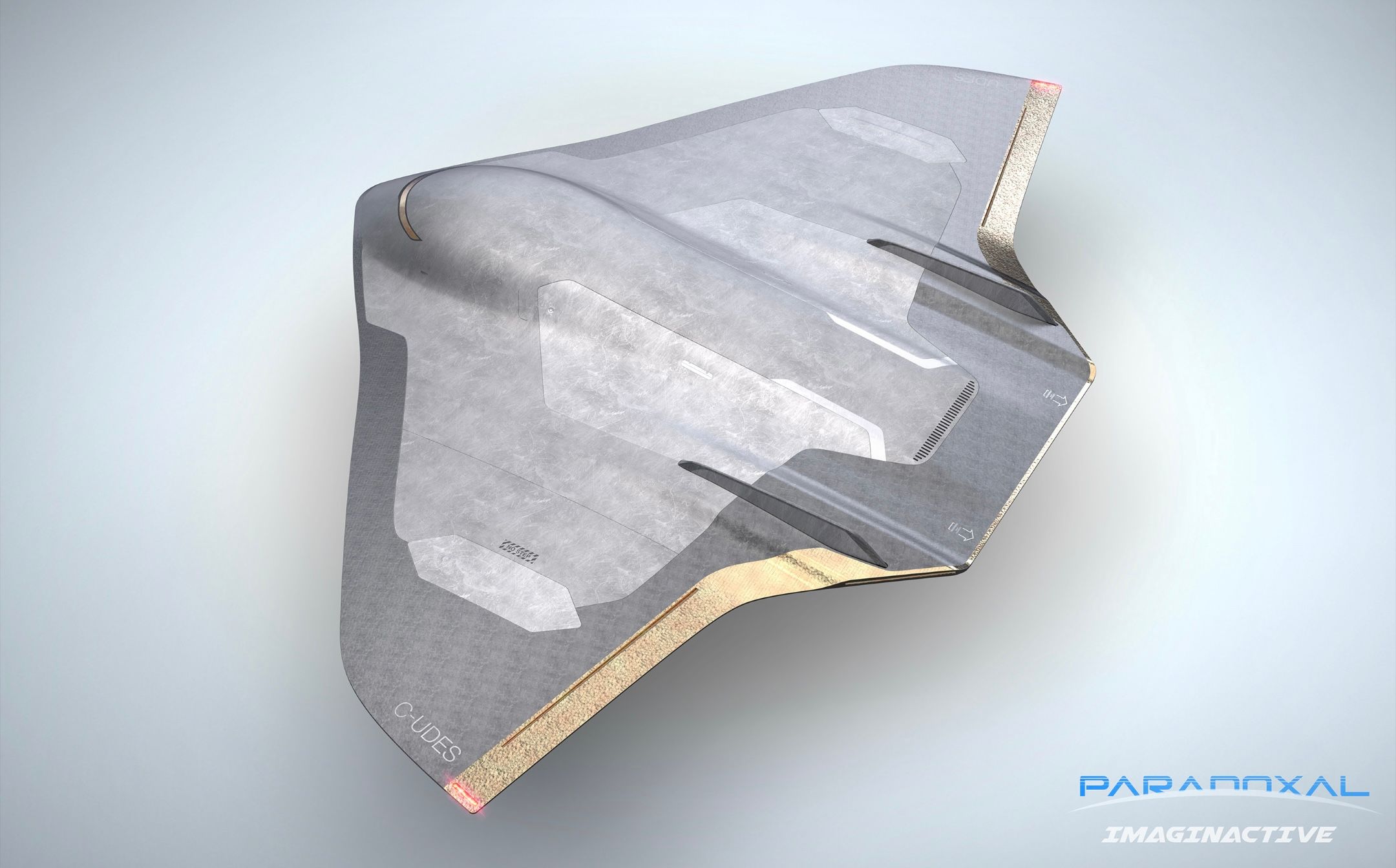Qantas Flight QF12 takes off from Los Angeles International Airport at 23:40, bringing passengers to Sydney Airport by around 07:45 two days later. This incorporates an Airbus A380 flying just over 15 hours non-stop, which is pretty significant. If you want to fly private to save time, plenty of operators can get you there; for example, Paramount Business Jets, which advertises an impressive fleet of ultra-long-range aircraft from Gulfstream, Bombardier, Dassault, and Boeing BBJ. But even then, the most modern jets may only save you an hour or two at best. What if we could go faster?
A new flying wing
Designed by Charles Bombardier, grandson of the Canadian aircraft manufacturer’s founder, “The Paradoxal” is a hypersonic jet concept that would redefine long-haul travel. This blended-wing-body (BWB) aircraft promises to get passengers from LA to Sydney in under three hours and take them to the edge of space while doing so.
This is not the first time Bombardier has produced a next-generation vehicle concept; some sources suggest the mechanical engineer has published hundreds of designs for many different products. Specifically, the Paradoxal would take advantage of technologies from the Université de Sherbrooke in Quebec, Canada, and NASA to the South in the United States.
To reach hypersonic speeds, the Paradoxal aircraft features two Rim-Rotor Rotary Ramjet engines (R4E), a propulsion system that promises to “improve power density and reduce complexity compared to conventional gas turbines.” According to Behance, the aircraft would be propelled in two stages:
- First, the Paradoxal accelerates to Mach 3.0 and climbs to 60,000 feet using air-breathing engines.
- Second, liquid oxygen would be introduced, essentially creating rocket engines, to help increase speeds beyond Mach 5.0, going hypersonic, before reaching the edge of the stratosphere.
As you can imagine, temperatures would be extraordinary. NASA’s Long Penetration Mode (LPM) would come into play to counter this. Behance notes,
“It involves injecting compressed air along the leading edge of all the aircraft (hence its shape, wIth one long continuous edge) and thus cooling its surfaces.”
Assisting the LPM system are retractable fins that can be hidden during any part of the journey when the flying wing is particularly susceptible to high friction and heat (such as during descent). All the while, any passengers onboard would have the chance to view space and the Earth from a new angle, just on the edge of space.
What would it be like to be a passenger?
Regarding the passenger experience, Flying Magazine mentions that as a feature of the BWB design, the cabin would likely have theater-style seating in the large open area rather than creating sections split by multiple aisles. But if this concept were to be rolled out of a production line, passengers would have to be willing to be subjected to the forces that come with hypersonic flight. Forbes writes,
“‘The most efficient suborbital G-flight path is probably not comfortable for most civilian passengers,’ admits NASA aerospace engineer Rebecca Farr, whom Bombardier collaborated with on the project. ‘That would be a problem for trajectory analysts to solve.’”
Like many of Bombardier’s concepts, the design is not necessarily meant to be produced in just a few years. Rather, he hopes to inspire and encourage the next generation of engineers, scientists, and designers to break our current boundaries. Perhaps, after a couple of decades of progress and research into next-gen flight designs, the Paradoxal (or something like it) will be gracing the skies and facilitating routes in unimaginably short durations.
What do you think of the design? Let us know in the comments below!
Sources: Flying Magazine, Architectural Digest, Behance, Robb Report, Inverse, ARC/Journal of Propulsion and Power, Forbes




